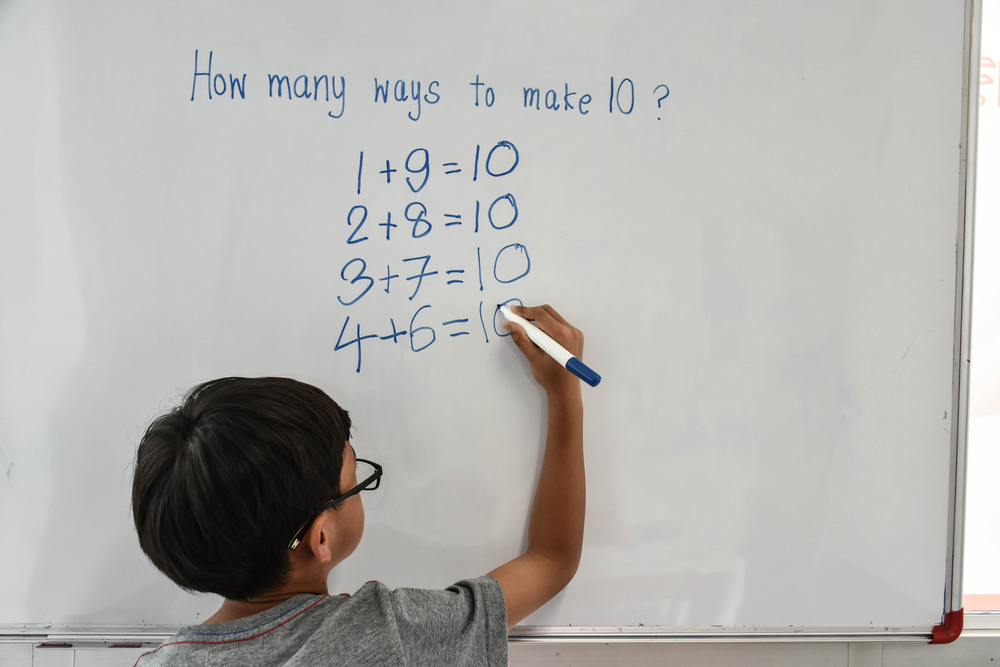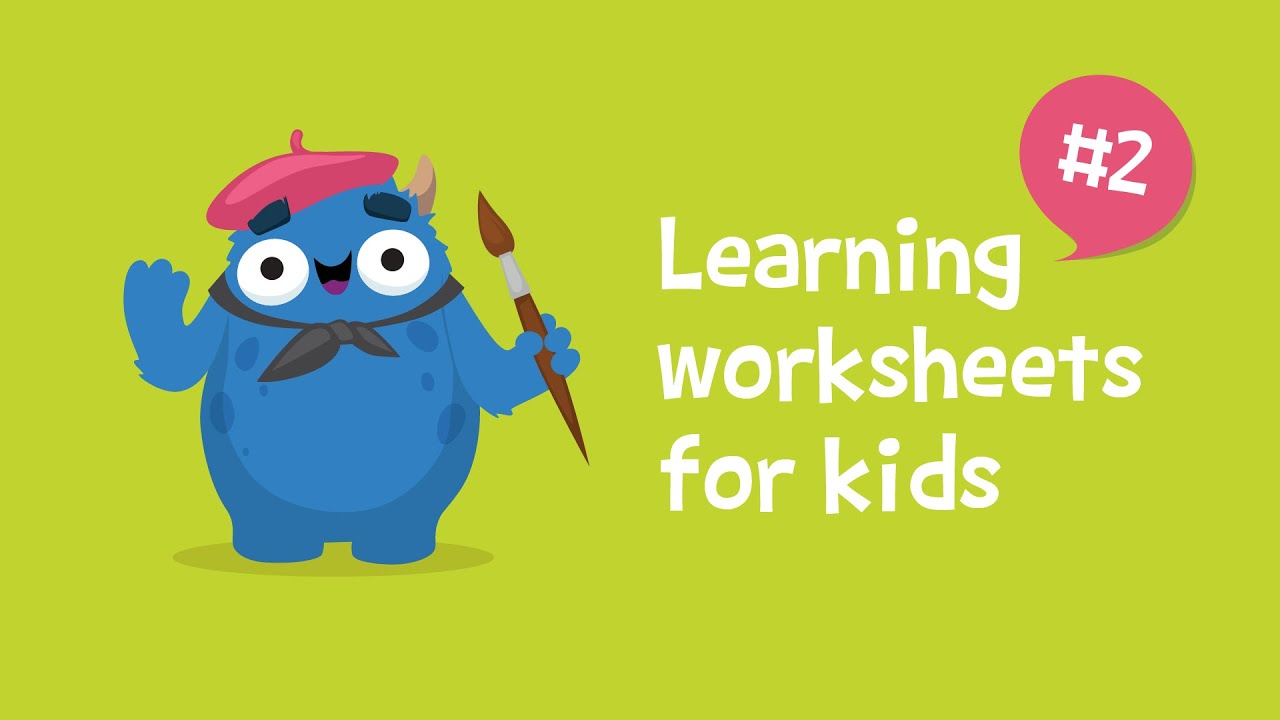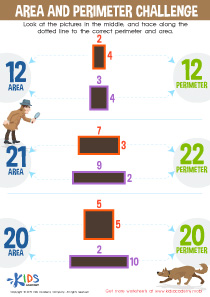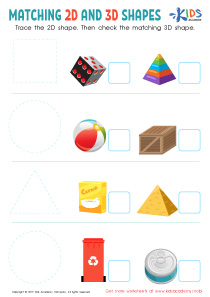Visual representation comprehension Fractions of Shapes Worksheets for 8-Year-Olds
3 filtered results
-
From - To
Unlock your child's understanding of fractions with our engaging "Visual Representation Comprehension Fractions of Shapes Worksheets" designed specifically for 8-year-olds. These worksheets utilize vivid visuals to help young learners grasp the concept of fractions through the division of shapes. Each activity encourages critical thinking as children identify, visualize, and work with various shapes divided into equal parts. By focusing on visual comprehension, we make learning interactive and enjoyable, enhancing mathematical confidence. Ideal for both classroom and home use, these worksheets not only reinforce essential fraction skills but also lay a solid foundation for future mathematical concepts. Start exploring today!
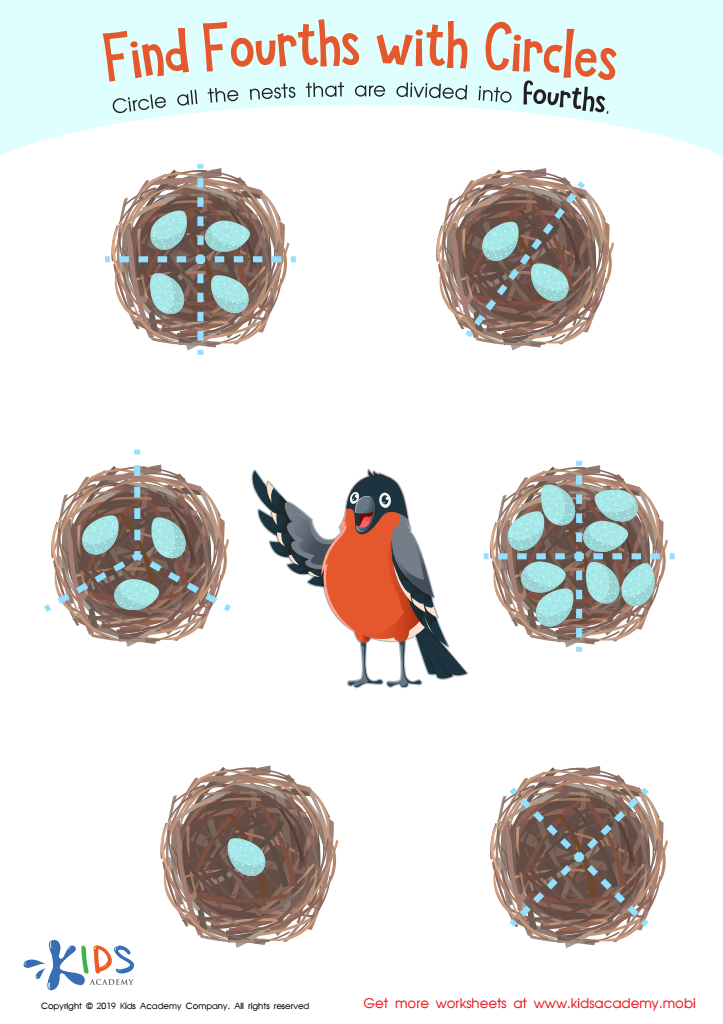

Find Fourths Circles Worksheet
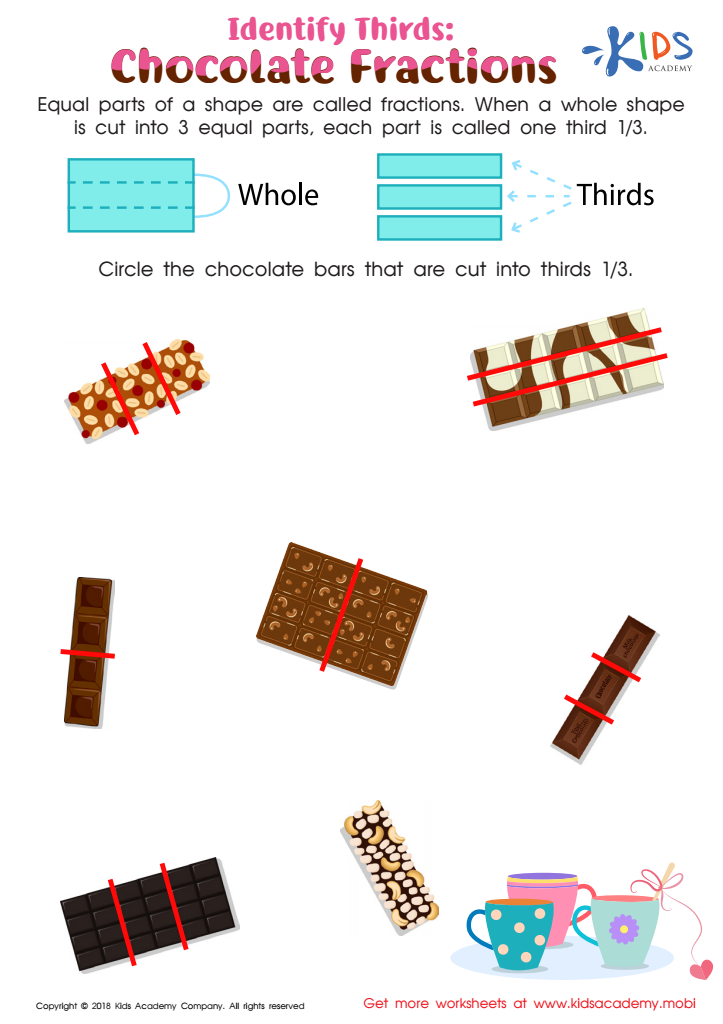

Identify Thirds: Chocolate Fractions Worksheet
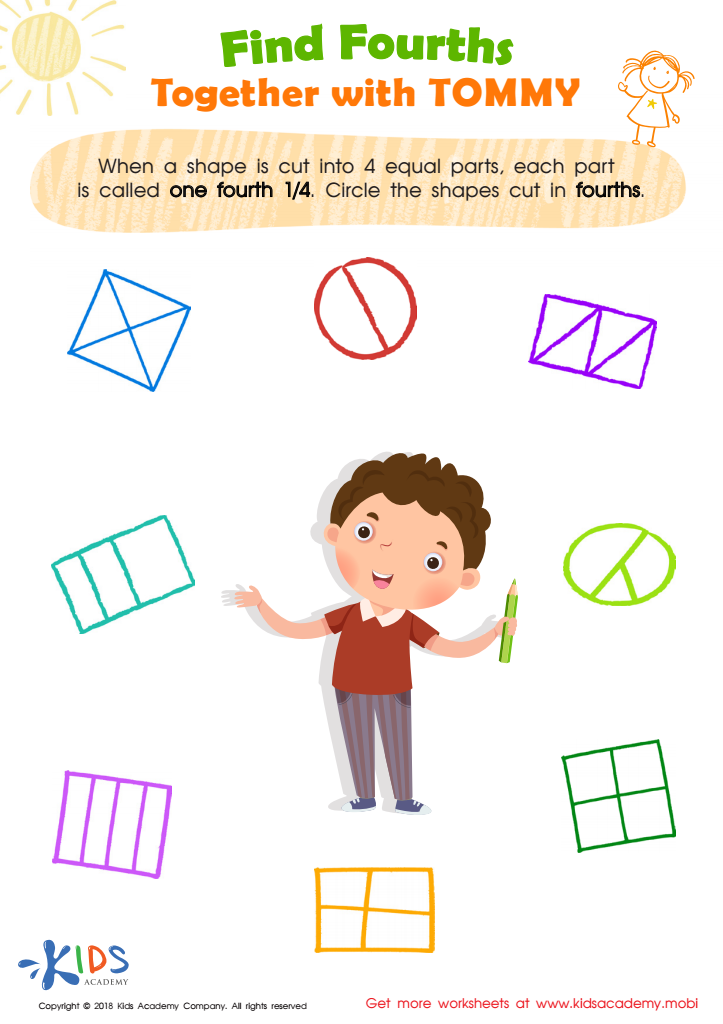

Find Fourths Together with Tommy Worksheet
Visual representation comprehension of fractions, particularly for shapes, is crucial for 8-year-olds as it forms the foundation for their mathematical understanding. At this stage, children are actively developing their ability to visualize and interpret abstract concepts, making it essential for parents and teachers to emphasize visual learning of fractions. When children learn fractions through shapes, they grasp the concept of parts of a whole in a tangible and relatable way.
Understanding fractions visually enhances problem-solving skills and boosts overall math literacy. It allows children to recognize fractional relationships and develop a sense of proportionality, which is fundamental for more complex mathematics later. Moreover, visual representations engage young learners' imaginations, making math more relatable and enjoyable.
Parents and teachers should also care about this comprehension because it promotes critical thinking. When children can visually manipulate shapes to represent fractions, they learn to analyze problems and arrive at solutions more effectively. This skill transfers to real-life situations, helping children understand measurements in cooking, dividing objects, or planning activities.
Ultimately, fostering strong visual comprehension of fractions in shapes at this age encourages positive attitudes towards math, laying a strong foundation for future academic success.
 Assign to My Students
Assign to My Students






